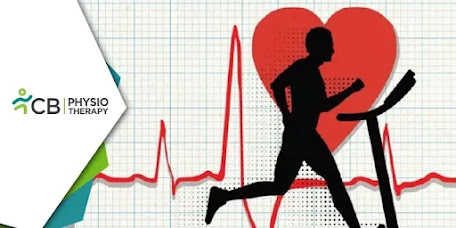Knee Osteoarthritis (OA) is one of the most common degenerative joint conditions that affects millions worldwide, leading to pain, stiffness, and reduced mobility. It can make even the simplest daily activities — such as walking, climbing stairs, or getting out of a chair — challenging and painful. While traditional treatments help relieve symptoms temporarily, modern physiotherapy has evolved with innovative solutions designed for deeper, faster, and longer-lasting recovery.
At CB Physiotherapy, one such revolutionary technology making a significant difference in the treatment of knee OA is CRET Therapy (Capacitive and Resistive Electric Transfer) — an advanced electrotherapy modality that accelerates healing, reduces pain, and restores function naturally.
Let’s explore how advanced CRET therapy at CB Physiotherapy is transforming knee OA recovery.
Understanding Knee Osteoarthritis
Knee Osteoarthritis is a chronic condition characterized by the gradual breakdown of articular cartilage — the smooth tissue covering the ends of bones inside the joint. As cartilage deteriorates, bones rub against each other, causing pain, inflammation, stiffness, and loss of mobility. Over time, the surrounding muscles weaken and the joint may develop deformities if left untreated.
While OA cannot be “cured,” it can be effectively managed and its progression slowed down with the right physiotherapy intervention — and that’s where CRET therapy comes in.
What is CRET Therapy?
CRET (Capacitive and Resistive Electric Transfer) is an advanced form of radiofrequency (RF) therapy that works by delivering controlled electromagnetic energy into deep and superficial tissues of the knee joint.
Unlike traditional heat therapies that only affect the surface, CRET generates deep biological heating that improves circulation, promotes cellular regeneration, and accelerates the body’s natural healing response.
How CRET Therapy Works for Knee OA?
At CB Physiotherapy, CRET therapy is used as part of a comprehensive knee OA rehabilitation program. It works through three main mechanisms:
1. Deep Tissue Regeneration
CRET enhances cellular metabolism, increasing oxygen and nutrient delivery to damaged tissues. This accelerates the repair of degenerated cartilage and soft tissues, helping to restore normal joint function.
2. Pain Reduction and Inflammation Control
The gentle thermal and electromagnetic effects reduce inflammation, edema, and stiffness in the joint. It also stimulates endorphin release, providing significant and lasting pain relief.
3. Improved Blood Flow and Mobility
By improving microcirculation and lymphatic drainage, CRET helps flush out waste products and toxins from the knee area. This leads to reduced swelling, improved range of motion, and better joint flexibility.
The result? A noticeable reduction in pain and stiffness after just a few sessions, and a faster return to comfortable, functional movement.
Advanced CRET Therapy at CB Physiotherapy
At CB Physiotherapy, our approach to CRET therapy is unique because it’s comprehensive, evidence-based, and patient-specific.
Each treatment begins with a detailed clinical assessment to understand your condition’s severity, mobility limitations, and lifestyle factors. Based on this evaluation, your physiotherapist creates a personalized treatment plan that integrates CRET therapy with other complementary techniques for optimal results.
Here’s what makes our CRET-based recovery program so effective:
1. Targeted and Controlled Application
Our therapists use advanced CRET machines that allow precise control of energy delivery — ensuring the right depth, intensity, and duration for your specific knee condition. This ensures maximum therapeutic effect without discomfort or side effects.
2. Integration with Manual Therapy and Exercise
CRET therapy is often combined with manual therapy, joint mobilization, and customized exercise programs. This combination not only relieves pain but also restores movement, strengthens muscles, and improves joint stability.
3. Safe and Non-Invasive
Unlike surgical options or repeated injections, CRET is completely non-invasive and pain-free. It involves no downtime, allowing patients to return to their daily activities immediately after each session.
4. Accelerated Healing and Long-Term Benefits
Regular CRET sessions can significantly slow down OA progression, improve cartilage health, and enhance tissue elasticity — leading to sustainable long-term improvement.
Typical Recovery Plan with CRET at CB Physiotherapy
Your treatment journey may include the following stages:
1. Pain Relief & Inflammation Control
Initial sessions focus on reducing pain, swelling, and stiffness through targeted CRET therapy combined with cryotherapy or gentle mobilization.
2. Mobility Restoration
Once pain subsides, therapists work on improving joint range of motion through stretching, soft tissue release, and guided movement exercises — with CRET assisting in tissue relaxation.
3. Muscle Strengthening
Strengthening exercises for the quadriceps, hamstrings, and hip muscles are introduced alongside CRET sessions to improve joint support and stability.
4. Functional Training
In later stages, you’ll work on daily functional movements — like squatting, stair climbing, and walking — ensuring smooth and confident mobility.
Why Choose CB Physiotherapy
At CB Physiotherapy, we pride ourselves on delivering advanced, technology-driven physiotherapy care. Our team of expert physiotherapists are trained in cutting-edge modalities like CRET, ensuring every patient receives the highest standard of treatment.
We combine advanced modalities with personalized exercise programs, ergonomic education, and lifestyle modifications to ensure holistic recovery and prevent future flare-ups.
Recovering from knee osteoarthritis doesn’t have to mean living with chronic pain or considering surgery. With Advanced CRET Therapy at CB Physiotherapy, you can experience a powerful, non-invasive solution that heals tissues from within, reduces pain, and restores your ability to move freely and confidently.
If knee pain is affecting your quality of life, it’s time to take control. Book your comprehensive knee assessment at CB Physiotherapy and discover how advanced CRET therapy can help you reclaim your strength, mobility, and comfort — one step at a time.




.jpg)